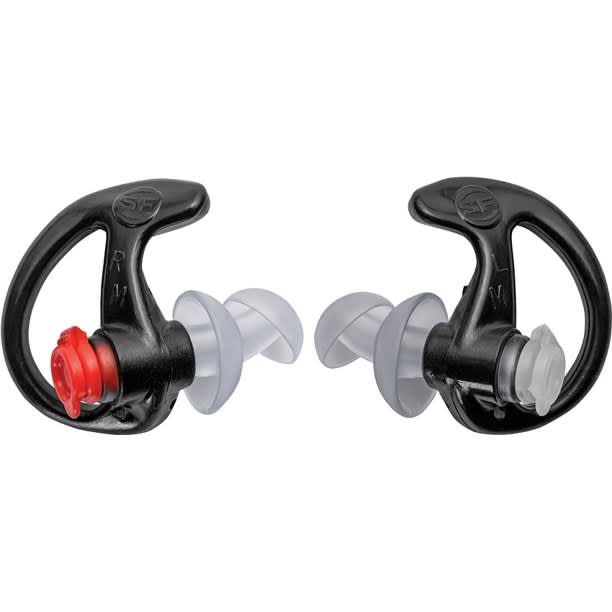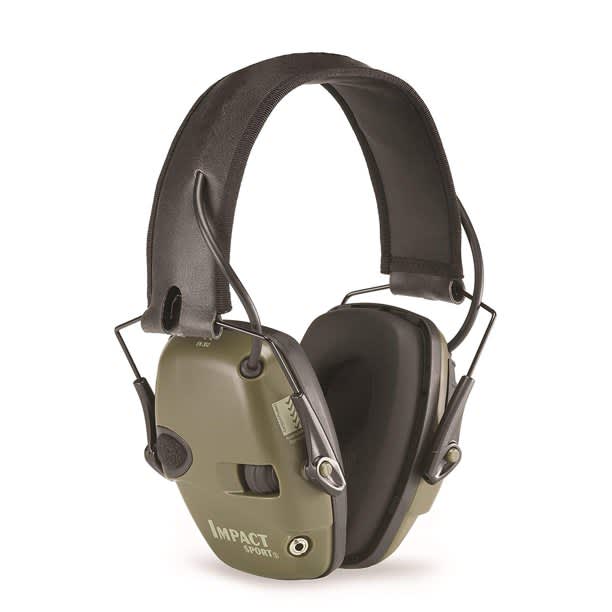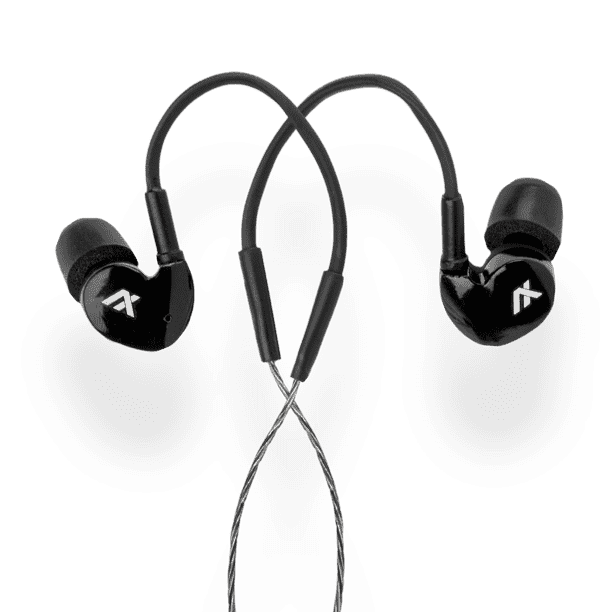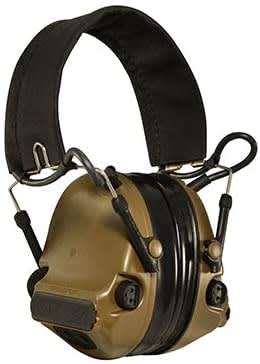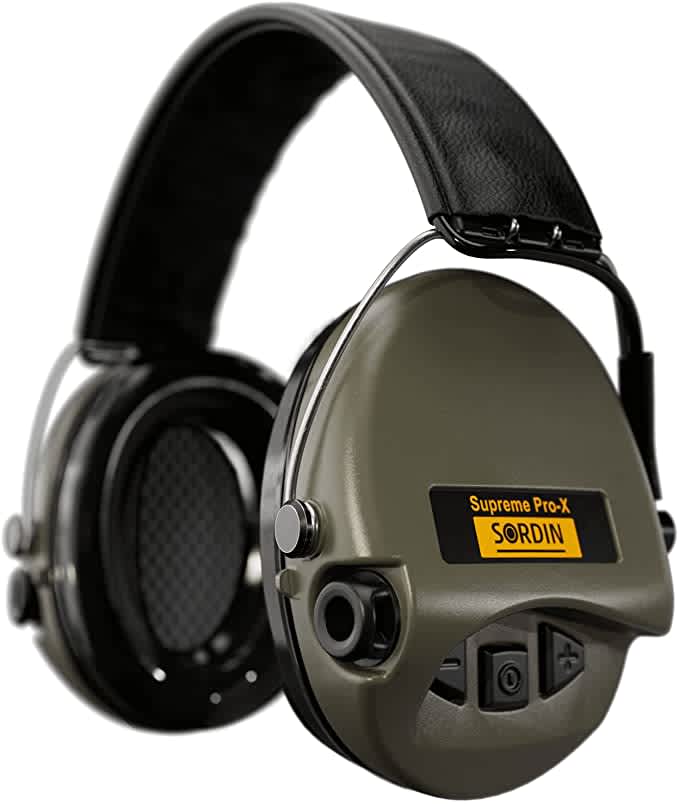Hearing Safe: The Best Hearing Protection For Shooting and Hunting
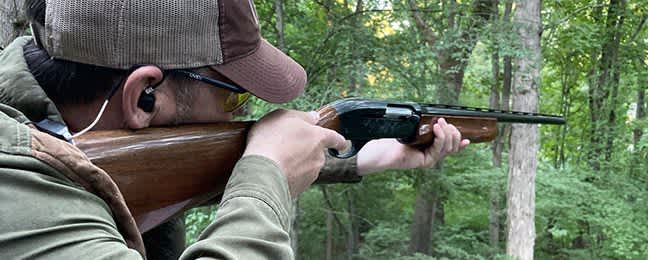
1. SureFire EP3 Sonic Defenders
Earplugs are a compact, and convenient way to keep your ears safe whenever you’re around loud noises. What’s unique about the EP3 Sonic Defenders is that they have a small little port that allows you to expose your ears to a bit more noise, but still protect you from the brunt of sound that comes from a gunshot or loud noise. These little ports allow you to still hear important communication like range commands, but also don’t use batteries so you don’t have to worry about lugging along extra juice for your ear pro.
2. Howard Leight Impact Sport Electronic Earmuffs
This was my very first pair of electronic hearing protection and I still use them to this day. Howard Leight electronic earmuffs have a similar design philosophy as the SureFire EP3 earplugs but take them to the next level in terms of technology. The earmuffs encompass the entire ear giving you good passive hearing protection but also add an electronic layer of protection and convenience over that by piping through sounds that fall below the 82 dB threshold, and quickly switching off the internal speakers when the muffs detect noises that are above that thus allowing your ears to stay protected while listening to range commands at a normal spoken level.
3. Axil Ghost Stryke Extreme 2.0
This is my current go-to pair of hearing protection. The Buds feature similar technology to the Howard Leight option but these are much lighter and are also not as dependent on the shape of your ear to stay seated. The GS Extreme 2.0 earbuds are powered by an onboard rechargeable battery with 16 hours of run time when using both the Bluetooth connection and the active noise cancellation. It’s like having Bluetooth earbuds, noise isolation headphones, and electronic ear muffs all in one product. Connecting these earbuds through your phone will allow you to control both the outside noise and the noise from your connected device independently.
4. Peltor ComTac III Headset
Peltor’s Comtac III Headsets are some of the best because they are made for some of the best. These military-grade headsets are capable of mounting microphones, and PTT buttons, and can be integrated with either dual or single comms systems so that you can stay connected on the battlefield or with your group of friends who you LARP around within the forest. Beyond the communications abilities, the Comtac III headsets also feature a rifle-friendly design that won’t interfere with your cheek weld, and they also have some of the best passive noise reduction on the market and have fairly decent onboard drivers for delivering crisp and clear comms and external noise that in some cases can enhance your situational awareness.
5. MSA Sordin Supreme Pro X
All active electronic hearing protection headsets made by Sordin are built in Sweden and show the highest craftsmanship, excellent wearing comfort, and precision engineering. Every hearing defender is suitable for use outdoors and indoors and protects its user from unpleasant and harmful noise. This headset is developed for those who do not want to trade off protection for communication. The external microphones can even amplify quiet sounds around you up to four times their normal noise level. Perfect for when you are out on the hunt and waiting for a deer to turn the bend. The integrated digital electronics seamlessly combine dampened loud noises with amplified quiet noises.
What does NRR mean?
NRR Stands for Noise Reduction Rating. Noise Reduction Rating (NRR) is a measure of the effectiveness of a hearing protection device to reduce noise levels. Higher values indicate greater noise reduction. NRR values range up to approximately 30 dB. To the right is an example of the EPA label for a headset with an NRR of 33 dB. You should aim for ear protection with a noise reduction rating of at least 22 when you’re around loud noises.
Are earmuffs better than ear plugs?
There is some debate as to whether or not covering your entire ear is necessary to keep your ears protected. A lot of PPE documentation states that earplugs are much more effective as they directly cover your ear canal and thus block more harmful noise from coming in. Others say that covering your ear lobes is just as important and that hearing damage can still take place if you’re around extremely loud noises like heavy machinery, jet engines, or gunshots. My recommendation would be to double up and wear some in-ear earplugs as well as some over-the-ear muffs to cover all your bases – you only get one pair of ears and there is no factory warranty on them.
What NRR rating is is needed for shooting sports like hunting and shooting clays?
Most firearms clock in right around the 140 dB mark with centerfire magnum rifles being much louder. Most hearing protection on the market today has a NRR rating of about 23 to 25 and this is more than suitable for cutting a standard 5.56 caliber firearm down from its harmful noise levels to something that is much more hearing safe. If you’re using a suppressor then you can probably get away with wearing lighter ear protection and with subsonic ammunition you can probably shoot an entire afternoon without needing earplugs. However, once again, use your best judgment and if something seems like it might be too loud – double up.
We are committed to finding, researching, and recommending the best products. We earn commissions from purchases you make using the retail links in our product reviews. Learn more about how this works.


